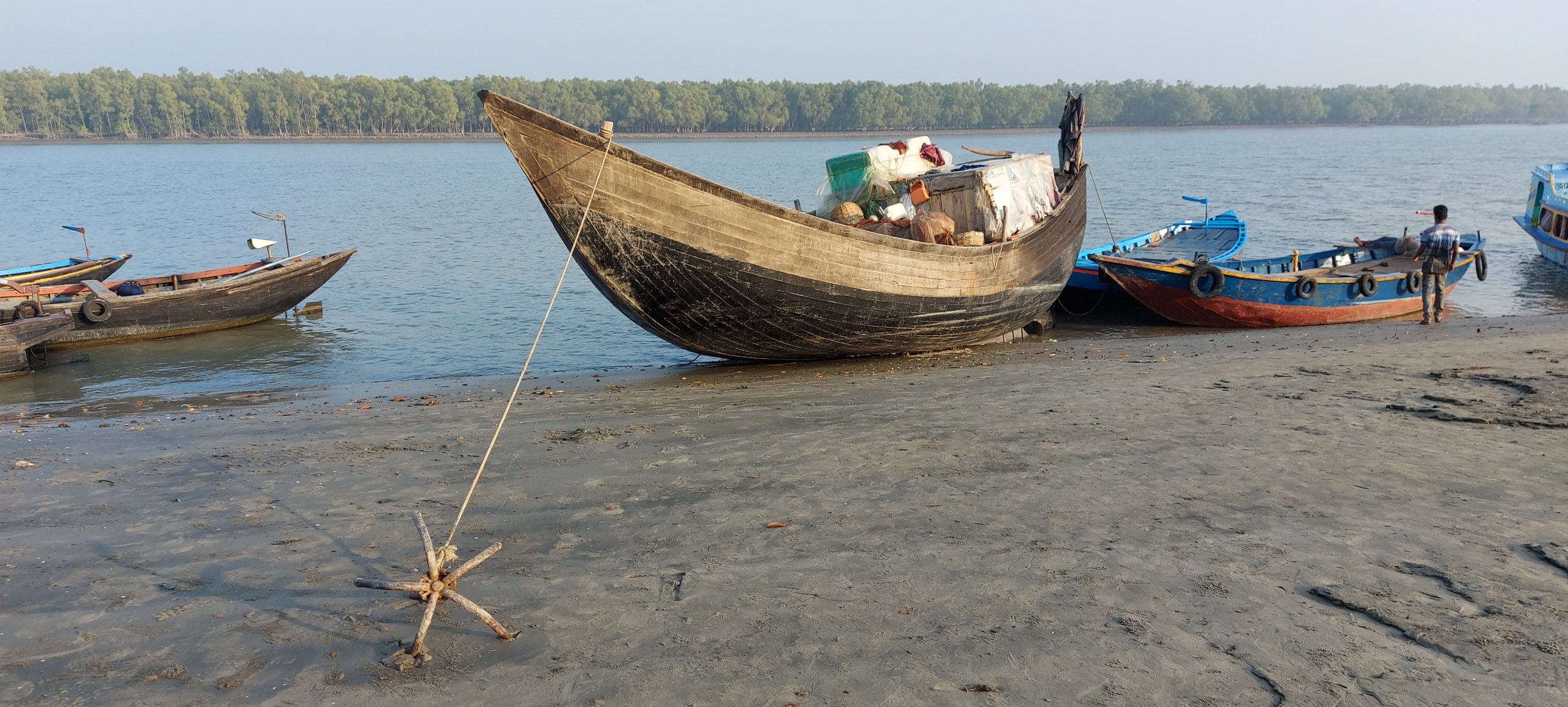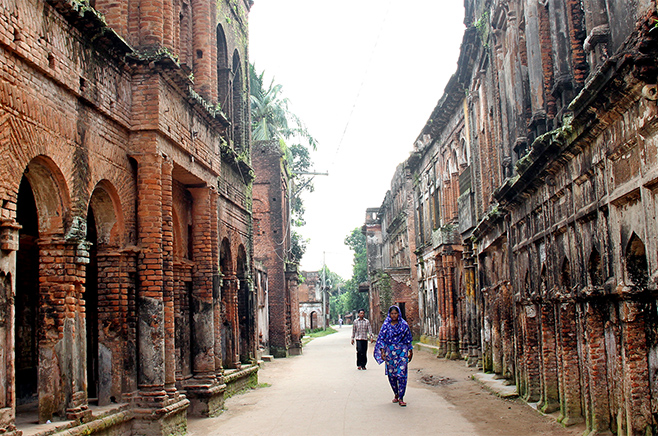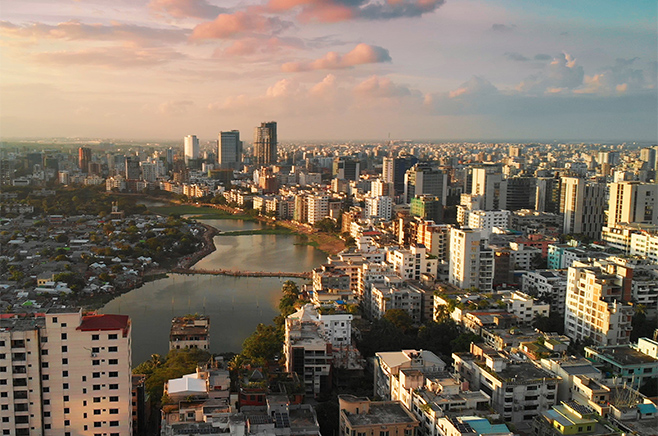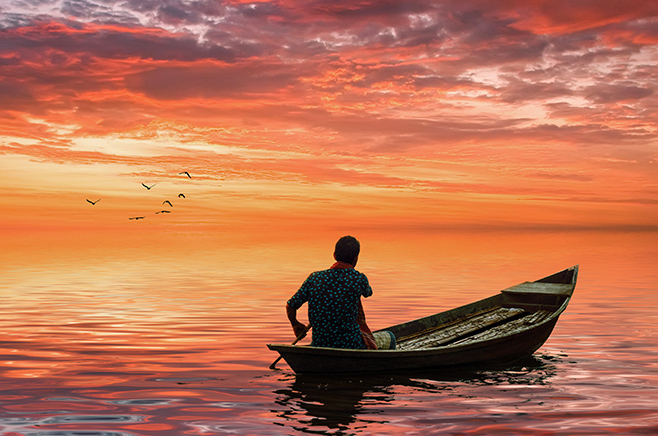
The Hills and Beach
- Home /
- Bangladesh /
- Natural Excursions /
- The Hills and Beach
The Hills of Bangladesh are spread over in the Chattogram Hill Tracts; Rangamati is called as the Queen of Hills, the highest peak of Bangladesh is situated in Bandarban, the Khagrachari is known as the roof of Rangamati. Largest manmade lake –Kaptai, hilly river Sangu, the ethnic people amidst the natural settings make the region more attractive. The ethnic people of more than 21 groups are rich in culture and distinctive in their lifestyle. You can taste the authenticity of their cuisine. The tribal bazaars also have their own charms. Flanked by the blue ocean on one side and green hills one the other, Cox’s Bazar, the world's longest unbroken sea beach (approx 155 km) attracts the nature lovers, Bangladesh’s most spectacular tourist destination also fall in this region. You can travel round the year, but foreigners feel comfortable mostly during October –March.
Itinerary In Detail
-
1: Arrive Dhaka
The guide will welcome you at the outside gate of arrival terminal-2 (left side corner) of Hazrat Shahjalal International Airport, Dhaka and then transfer to your designated hotel. Depending on time, he may offer you to visit following places: Dharmarajika Buddhist Temple was established in 1960 by the initiative of Bishuddhananda Mahathera. It acts as the cultural and regional centre of Bangladeshi Buddhists. It houses the ashes of famous Buddhist scholar Atisha Dipankara called as Second Buddha and has a good collection of Buddha statues. Curzon Hall meant to be a town hall, was named after Lord Curzon –a Viceroy of India (1899-1905) who laid its foundation stone in 1904. A year later Bengal was partitioned and Dhaka became the capital of the newly created province of East Bengal and Assam. After the establishment of Dhaka University in 1921 it become part of the university’s science section and continues as such. Musa Khan Mosque, the three domed prayer hall, is one of the few Mughal structures on Bangladesh built in 18 th century. The mosque holds significant historical values as it is named after the son of medieval Bengal's one of the most prominent Baro-Bhuyans, Isa Khan's son Musa Khan. The structure was erected during the Mughal regime in Bengal by the grandson of Musa Khan, Diwan Munawar Khan. Dhakeswari Temple, built by King Ballal Sen in 12 th century, is the state temple of Bangladesh for Hindu Community. Some people believe the city named “Dhaka” after the temple.
Stay overnight in Dhaka. -
2: Dhaka –Chattogram via Sonargaon and Cumilla (270 km/ approx 8 hrs drive)
After breakfast, check-out from the hotel and start for Chattogram. En-route, we will visit Sonargaon –the ancient capital of Bengal on Turkish Sultanate period during 1280 AD and Mainamati –an isolated low dimpled range of hills dotted with more than 50 ancient Buddhist settlements dating between 7 th -12 th centuries AD. It was part of the ancient Samatata division of Bengal and is the home of one of the most important Buddhist archaeological sites in the region. Panam Nagar, one of the most endangered historic sites in the world and is a subject of significant archaeological and artistic interest, which is also known as a Dead City, is located at Sonargaon. Most of buildings suffer from rising damp while biological and insect damage has affected the architectural woodwork. At present there are more than 50 buildings in both sides of a road established in the late of the 19 th century. The New York-based World Monument Fund included Panam Nagar in its World Monuments Watch List of 100 Most Endangered Sites in 2006. [Close on Sunday full and Monday 1 st half] Salban Vihara, Kutila Mura and Rupban Mura are very important to study Buddhism, located at Mainamati. The recent excavation made
the archaeological museum more attractive. A new Buddhist temple has been built there by the Thai Government, with a Lotus Bud on top is worth visiting. [Salban Vihara and the museum closed on Sunday full and 1 st half of Monday.] Then drive continuous to Chattogram, check-in to hotel upon arrival and stay overnight. -
3: Chattogram –Bandarban (80 km/ approx 3 hrs drive)
After breakfast, drive to luminous hill district Bandarban through the plain land and forested hills. Bandarban is the attractive place to visit and to get a touch of different tribal communities with their own cultural entity. There is not less that 12 to 13 indigenous tribal groups generated from the Sino-Tibetan origin that migrated mainly from Arakan and found safe shelter to this hill plateau just 250-300 years back. Upon arrival you have to stop at BDR Check Post for entry procedure and then transfer to hotel. After freshen up, visit a Marma Village. The Marmas are the second largest ethnic group in Bangladesh and they are of Burmese (Myanmar) ancestry. They speak Marma, and the majority is Theravada Buddhist. They have many festivals during the year, but the three days long Sangrai (New Year festival) is regarded as the biggest celebration among them. Afternoon; visit Nilachal to watch the wonderful natural view around Bandarban from a top.
Stay overnight in Bandarban. -
4: Bandarban –Cox’s Bazar (120 km/ approx 4 hrs drive)
After breakfast, trek through the hills and streams and visit different tribal villages –Bawm, Tripura or Mru as permitted by the authority. The Bawms (also known as Kuki and Chin), are one of smallest ethnic groups inhabited in Chattogram Hill Tracts, speak the Sino- Tibetan Bawm language and strongly believe in Christ. A significant element in Bawm culture is the bamboo dance, performed only an unnatural death happens in the family. They have their own social structure to regulate their conduct and do not go to court or to any government agency to settle disputes. They regulate their life according to their own customary laws. The Tripuras believe in Hinduism and speak Kok-borok Tibeto-Burman language. The social structure of the Tripura nation is patriarchal. They have two main festivals; two days long New Year festival called Boishu and the other one is Hangrai (crops harvesting festival). Their distinctive culture – as reflected in their dance, music, festivals, management of community affairs, dress and food habits. The Mru (also known as Mro, Murong, Taung Mro, Mrung, and Mrucha) speak a Mruic language of the Tibeto-Burman group of the Sino- Tibetan family. The language is considered "severely endangered" by UNESCO. They had no written language of their own, but some could read the Burmese and Bangla scripts. Both men and women pierce their ears and wear rings. They are animists and have three gods, but do not believe in the afterlife. They revere the sun and the moon, but do not worship those. They do not have any priests, any scriptures or any temples.
After the interesting ethnic village trip, visit Zadi Temple. Then drive to Cox’s Bazar, check-in hotel and stay overnight. -
5: Cox’s Bazar Tour
Morning; visit Aggamedha Buddhist Khyang and then you will be transferred to the bay jetty visiting the Maheshkhali Island by speed boat. Maheshkhali is a small island with an area of 362.18 sq meters, surrounded by forested hills and mangrove trees alongside the coastal beach. There are some attractive places such as several Buddhist Temples, 11 th century Adinath Hindu Temple on the top of a hill, betel leaf field and salt field, etc. You will enjoy the simplicity of the island and the lifestyle of the people riding a local 3-wheeler. Cruise back to the city and then drive 35 km to Inani through the long Marine Drive Road, green forested hills on the left and the ocean on your right side will give you a mesmerizing natural view. Enjoy the nature around till sunset.
Then drive back to city for night stay. -
6: Cox’s Bazar –Rangamati via Ramu (210 km/ approx 6 hrs drive)
After breakfast, drive to Ramu, the ancient Rakhain capital. Here you would find various Buddhist relics and Burmese handicrafts. The best attraction is however, the large bronze statue of Buddha found in whole of Bangladesh. Among the biggest one you will find many Buddha statues here. Visit Ramkot Vihar, people believe that Gautam Buddha visited this place. Then drive to Rangamati –the queen of the hills. Upon arrival in the hill district, you have to stop at BDR Check Post for entry procedure and then transfer to the hotel for night stay.
-
7: Rangamati Tour
Early morning around 0500 –0530 hrs, take a mechanized boat and cruise on the Kaptai Lake, the largest man-made lake of South Asia. The boat journey through the crystal clear water will be an amazing experience and you will enjoy the nature around and can visit Shuvolong tribal bazaar (sits on every Friday; very early morning 0500 hrs to 0930 hrs), Chakma village and their handloom domestic factories, King House and other scenic spots beside the lake. Chakmas, the largest ethnic group of the Chattogram Hill Tracts came from Arakan (Burma) in the early 16 th century, follow Theravada Buddhism and celebrate various Buddhist festivals. They are more educated than the other indigenous people and can speak Bangla fluently.
Afternoon; you can visit Rajban Vihara Buddhist Khyang and Tribal Cultural Museum.Stay overnight in Rangamati.
-
8: Rangamati –Dhaka (310 km/ approx 8 hrs drive)
Early morning visit Banarupa Bazaar, a special place where tribal people sell their traditional food items and necessary household products. If you walk through a narrow lane of the bazaar, it will end at the Shamata Ghat which is the main jetty to bring goods by boat through Kaptai Lake and Karnaphuli River. This market is open for seven days a week, but every Saturday and Wednesday it gets in full of form. On those days, hundreds of boats loaded with goods come at Shamata Ghat, the porters are shouting, the carts are busy, the tribal girls sit with their Jum cultivated crops, dry fishes, crabs, snails, tobacco, etc to sell. Buyers and sellers, both are tribal, mostly Chakmas. Then drive back to Dhaka, check-in to hotel in the evening and stay overnight.
-
9: Depart Dhaka
After breakfast, transfer to airport for onward destination.

Any Question?
Feel free to call our travel experts.
+977 9851189018, +977 9801089018
info@asiaticroads.com

Any Question?
Feel free to call our travel experts.
+977 9851189018, +977 9801089018
info@asiaticroads.com

Any Question?
Feel free to call our travel experts.
+977 9851189018, +977 9801089018
info@asiaticroads.com
Reviews
In my 2 week stay, John was very professional and took me around to experience all that Kathmandu and surrounding areas has to offer. Sites were seen and many locals were met through John’s network.

Steven Stone
TravellerIn my 2 week stay, John was very professional and took me around to experience all that Kathmandu and surrounding areas has to offer. Sites were seen and many locals were met through John’s network.

Steven Stone
Traveller






